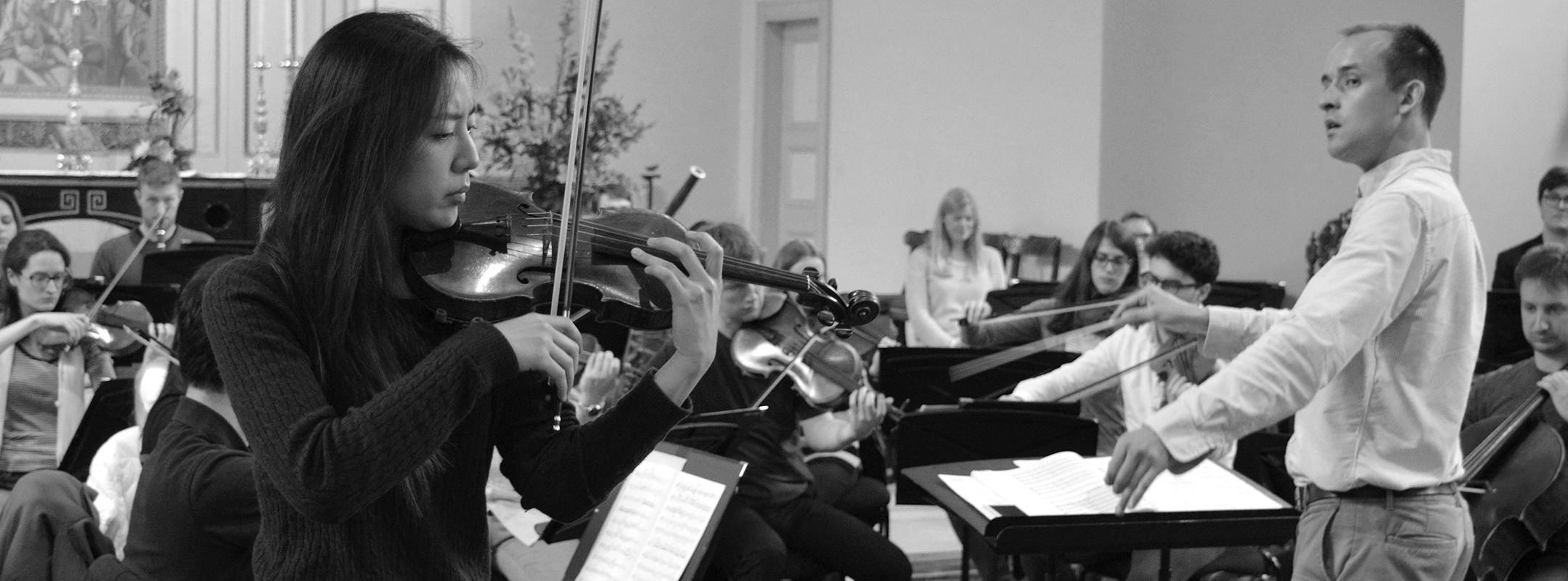
Violin
I can’t remember exactly how young I was, but a long time ago I watched a video of Hilary Hahn playing the Brahms Violin Concerto and it just blew me away. After seeing that, I knew it was something I wanted to try myself. I find a real thrill in performing things that are technically demanding, and this concerto is known to be a tough challenge. But more than that, I love the piece: the melodies really touch me, and the whole thing is just so fiery and intensely passionate. I’ve always wanted to play it and now I’m just so excited to finally be able to with Southbank Sinfonia.
Divide and conquer
When you first start tackling any solo piece, it’s a case of breaking it down. I play and memorise very little sections, then bolt more and more together to make the memorised sections larger and larger. When it’s long enough, I’ll practise playing through that segment to get it feeling really secure before moving on and repeating the same process. Play it through, add new bits on, play it through.
I’m currently doing this for the third movement of the concerto. So, taking today as an example, I took a certain few bars, worked through them slowly, gradually built them up, then added a few more. This process is repeated over and over, bar by bar, and although it’s time consuming, that’s just what it takes to really get to know a piece.
Recordings are particularly rich sources of inspiration for really fine details and subtleties, but there’s a point at which I stop listening to them in the lead up to a concert to focus on my own performance. Little things like hearing another musician’s bow changes can be dangerous, something that can be off-putting if they differ from a particular bowing I’ve been practiscing and know I’ll be using. Clarity of thought in my own performance is important in the build-up to the concert.
More than just notes
Of course, there’s more to a performance than just playing several thousand notes – there’s also a lot of physicality to think about. My last professor taught me a great deal about being a performer; it’s not enough to know what you want inside your head, you also have to be able to convey that to the audience. You need to give visual clues, using body language to guide them through the music with you, and there are moments throughout the concerto where I’ll want to move a little bit more to physically convey something extra. The only thing I can’t control are my facial expressions!
Watch Sujin’s inspiration, Hilary Hahn, perform the Brahms Violin Concerto with the Frankfurt Radio Symphony Orchestra in the video below.
Find out more about Sujin here